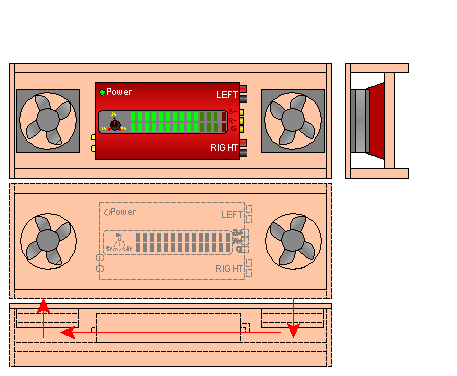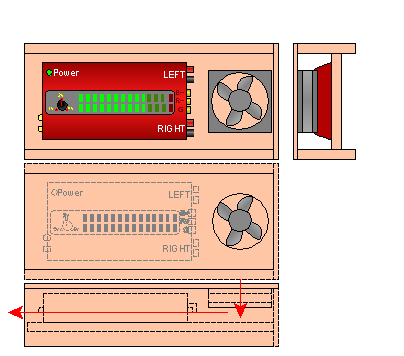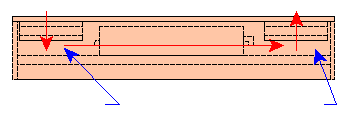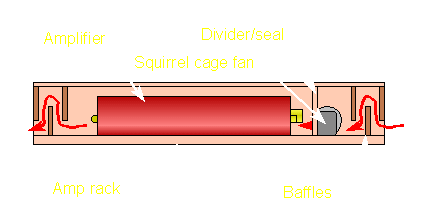|
Amp Rack
An amp rack can be of almost any design, shape or size. The image below is a simple functional amp rack. You can do better (or worse). For the best cooling, the internal dimensions of the amp rack should be only slightly larger than the amp. This will significantly increase the air velocity along the sides and top of the amp and promote the best possible cooling. The red arrows indicate the direction of airflow.

If you want to use a single fan, simply leave one end of the rack off (the end opposite the fan) like the diagram below.

Push-Pull vs Push OR Pull:
There has been a lot of discussion on different forums about the use of fans in push-pull configuration. Some people have said that it is not an efficient use of fans when they are used in a push-pull configuration. They've said that it's better to use both for pushing or both for pulling (either of which, they believe, is better than push-pull). I believe that push-pull is more efficient (although not significantly more). When using one or more fans to push air into a chamber (one end of the amp rack), they will only be able to build a certain amount of pressure. Multiple fans will not be able to generate more pressure (it's like adding batteries in parallel). The air pressure at the output end of the amp rack in this (push only) configuration is atmospheric pressure. The flow across the fins will be a function of the difference in pressure between the pressure in chamber 'A' and the pressure in chamber 'B'. Most fans can not develop more than about 0.25" of water of static pressure (~0.01PSI). To increase the flow without changing the shape of the amp or amp rack, you must increase the the static pressure or change the difference in air pressure from one side of the amp to the other. Since the static pressure that the fan can produce is fixed, to increase air flow, you need to decrease the pressure on the output side of the amp (in chamber 'B'). This can be done by using a fan to pull air out of chamber 'B'. The second fan pulls a partial vacuum on chamber 'B'. This means that the differential pressure across the amplifier will be increased and the flow will increase. If someone has any real proof that this is not true, please email me. I don't want to insult or offend anyone but I'd like to straighten this out one way or the other.

Quieting Fan Noise:
The following diagram shows a squirrel cage fan in an amp rack. The baffles will block the high frequency noise produced by the fan. Baffles on both ends are not necessary. If baffles are only put on one end of the rack, you should put the baffles closest to the fan's mounting location. The divider/seal acts as a baffle to separate the front of the the fan's intake from it's exhaust. This will greatly improve the fan's performance. For the best performance from the baffles, they should be covered with carpet or other material that will absorb high frequencies.

More information on cooling fans can be found on the Cooling Fans page.
|








